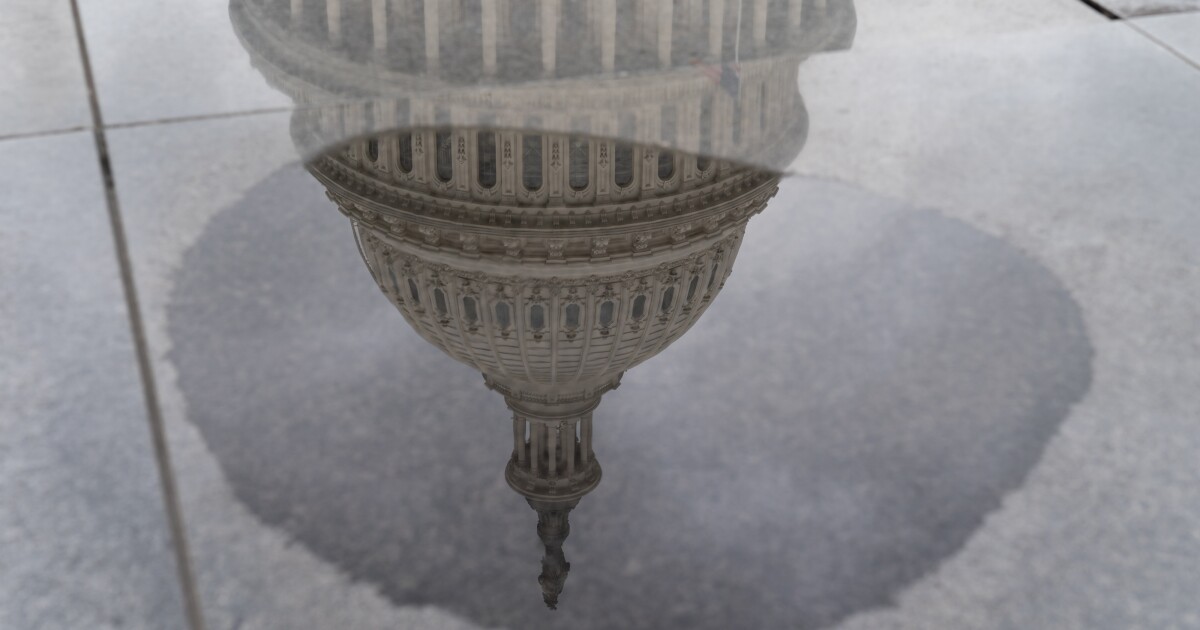Even after the biggest May jump in 35 years for the S&P 500, investors’ understandable confusion about the future of tax and tariff policies and inflation is driving a lot of anxiety.
The S&P’s value ended up 6% last month, alongside a 4% gain in the Dow and 10% surge in the Nasdaq index — a stark reversal from the steep losses surrounding President Donald Trump’s announcement of substantial tariffs, which he later paused for 90 days. Financial advisors’ expectations for the economy, as reported in Financial Planning’s Financial Advisor Confidence Outlook survey, turned slightly less negative after an all-time low score in April.
Beyond questions of how potential tariffs might affect inflation, the One Big Beautiful Bill Act is drawing scrutiny as the major tax and spending legislation heads from the House to the Senate. Concerns include who stands to benefit and who will lose out, and the bill’s ramifications to the federal budget deficits and the national debt.
Many high net worth and ultrahigh net worth clients who work with David Lesperance, the founder of immigration tax and law advisory firm Lesperance & Associates, are already seeking to get “all the pieces in place and all the planning done” with an eye toward “maximizing optionality to be able to deal with the unpredictable,” he said. “They just don’t know, so the key is to be prepared for any contingency and to be able to execute quicker than the legislature, which is generally possible.”
READ MORE: Trump’s tax bill offers wins — and a major loss — for advisors
Responding to uncertainty
In the case of Lesperance’s ultrawealthy clients, that means taking steps as drastic as seeking residency outside of the country and offshore citizenship in anticipation of a recession next year and the political pendulum swinging back toward Democrats, who might adopt taxes on unrealized gains or that target billionaires or millionaires. Other investors may be acting toward much more immediate needs or even from a sense of panic.
Out of 373 retirees polled between March 25 and April 17 as part of the Schroders 2025 US Retirement Survey, 92% said they are worried that inflation will reduce the value of their assets, 62% admitted they have no idea how long their savings will last and almost half said their expenses in retirement are higher than they expected, said Deb Boyden, the firm’s head of U.S. defined contribution. For many retirees, the “stress of uncertainty is an everyday battle” rather than “just economic theory,” Boyden said in an email.
“While advisors and clients can’t control Washington, they can control how they respond,” Boyden continued. “Sticking to a financial plan, staying invested through market cycles, and resisting the urge to make emotional decisions are all variables within their control. Periods of heightened uncertainty present an opportunity for advisors to deepen relationships by communicating with clients more frequently to help them reassess goals, understand allocations and feel more confident in their strategy. Our data shows that many retirees are without a plan or professional guidance — this void is an opportunity for advisors.”
READ MORE: SALT, tips and auto loans: A guide to the House GOP tax bill
Answering the unknowables
Those retirees and other investors are struggling to find answers that aren’t even clear to some of the top experts trying to figure out the form and implications of taxes and tariffs in the future. Ongoing court cases have placed the basic legality of some of the administration’s tariffs under multiple levels of judicial review, and that could affect the fiscal price of the tax and spending legislation. The bill is facing substantial criticism over, among other things, its price tag adding $3 trillion to the national debt over a decade, just after a downgrade to the U.S. government’s credit rating by Moody’s Investors Service.
But the bill garnered enough support to pass the House by one vote and the backing of influential groups like the pro-business U.S. Chamber of Commerce, which is financing an advertising campaign that calls on lawmakers to vote for “securing permanent tax relief for America’s families, workers and entrepreneurs.” However, in an indication of the complexity of the current political environment, the Chamber also refers to the prospect of tariffs as a “new tax on summer fun.”
The outlook has grown so blurry that David Kelly, the chief global strategist of JPMorgan Asset Management, compared investors’ task of figuring out next steps to the challenge of five argumentative siblings putting together a 1,000-piece puzzle.
“Despite political tensions, ongoing policy changes and heightened inflation and recession concerns, 2025 so far has generated positive returns for investors, with the S&P 500 and the bond markets registering small gains and international stocks posting much larger increases,” Kelly said in a June 2 note. “This is no time for complacency, however. The outlook for the economy is for just slow GDP growth, smaller job gains and temporarily higher inflation. This should translate into sticky interest rates, decelerating earnings growth and a falling dollar. At the start of the year, given valuations and portfolio concentration, it made sense for investors to rebalance away from U.S. mega-cap growth stocks and towards more defensive U.S. stocks, international equities and alternatives. Five months into the year, while the macro jigsaw remains complicated, the same advice seems warranted.”
READ MORE: Tax Cuts and Jobs Act expiration: A guide for financial advisors
Legislative agenda
As for the tax and spending bill, President Trump’s Republican allies in the Senate have discussed a possible goal of passing the massive legislation by July 4. But voting the legislation through the Senate could prove difficult, according to Jonathan Traub, a managing principal and the leader of the Tax Policy Group at consulting and professional services firm Deloitte Tax.
“For both policy and procedural reasons, we can expect changes to the current legislation,” Traub said in a statement after the House passage of the bill last month. “It will remain a tremendous challenge for Republican leaders to keep near unanimity among their members given the push and pull on so many major components of the bill.”
Provisions of the bill as wide-ranging as the level of tax brackets and states’ ability to regulate artificial intelligence and as narrow as a new levy on international remittances and shifts in the rules for expenses eligible to be paid through 529 savings plans will receive close scrutiny in a Senate debate that could extend far beyond Independence Day. Advisors and their clients may need to plan for multiple different outcomes in the interim.
“There’s a whole bunch of opportunity, but in order to do that you need to get a whole bunch of planning in place,” Lesperance said. “It’s very interesting on the planning side, but people are scrambling, and they’re making educated bets.”


 Blog Post1 week ago
Blog Post1 week ago
 Economics6 days ago
Economics6 days ago
 Economics1 week ago
Economics1 week ago
 Accounting6 days ago
Accounting6 days ago
 Personal Finance1 week ago
Personal Finance1 week ago
 Economics7 days ago
Economics7 days ago
 Personal Finance6 days ago
Personal Finance6 days ago
 Personal Finance6 days ago
Personal Finance6 days ago










